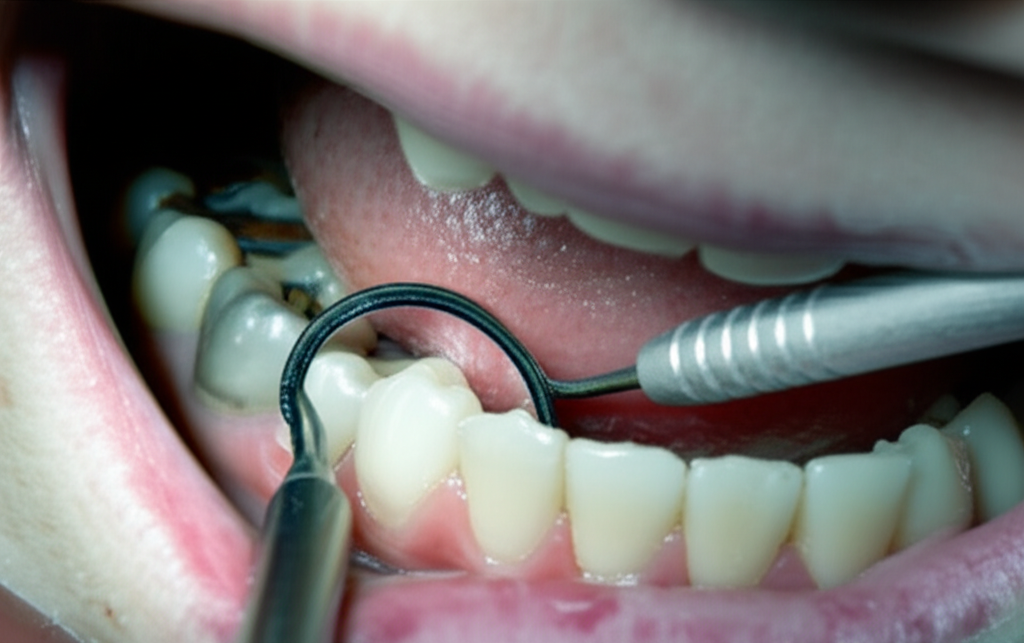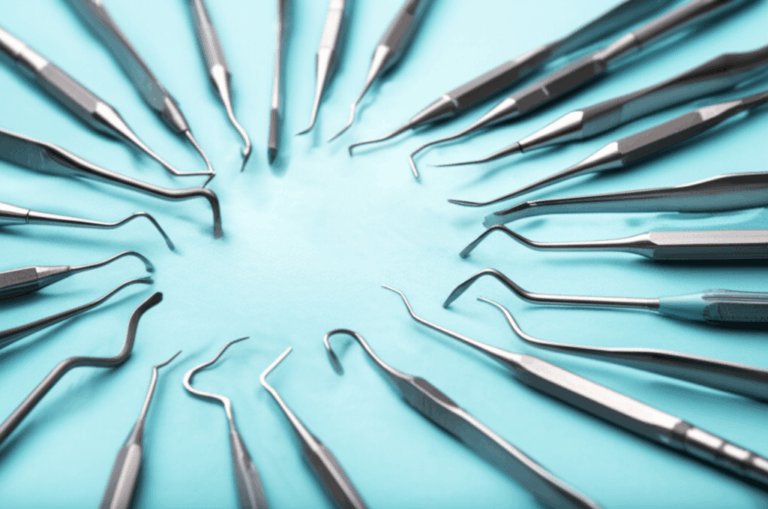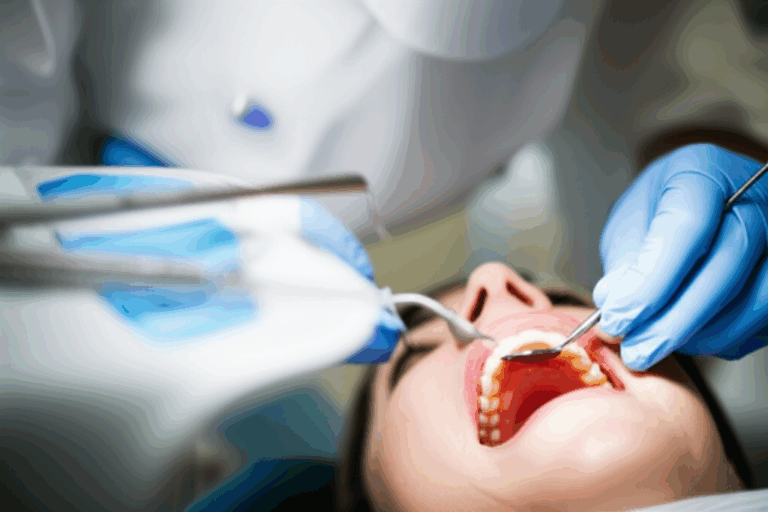
Why Dental Calculus (Tartar) Is a Major Concern for Every Dentist: My Personal Experience
Table of Contents
- Gum Disease: Why It Starts With Calculus
- Bone and Tooth Loss: The Damage You Can’t Undo
- Tooth Decay Hiding in Plain Sight
- Dental Calculus and Whole-Body Health
- Diagnosis Isn’t Always Straightforward
- More Hours, More Work, More Stress
- Calculus Loves a Comeback: Why Prevention Matters
- When Calculus Spoils Cosmetic and Restorative Dentistry
- Regular Cleanings: The Gold Standard
- Patient Education: The Real Battleground
- Addressing Severe Cases: Advanced Therapies
1. Introduction: Seeing Calculus Through the Dentist’s Eyes
For most people, “calculus” might remind them of some tough high school math class—or maybe just something hard and crusty on teeth. For me as a dentist, though, dental calculus (or tartar) is a big, everyday problem. It’s not just about keeping teeth looking nice. It’s about keeping my patients safe from a whole chain reaction—painful gums, bone loss, losing teeth, and even sickness in other parts of the body.
When someone sits in my chair and opens their mouth, I don’t just look for cavities or wobbly teeth. I’m on the lookout for calculus, because if I miss it, I could be letting a lot of trouble walk out the door. Dentists aren’t only worried about how teeth look—we worry about the hidden problems those hard, yellow spots can cause.
Dental calculus isn’t only a “looks” problem. It’s a warning sign that something is wrong. And that’s why every dentist, myself included, treats calculus as a top job—even before the patient knows anything’s wrong.
2. The Direct Threats of Dental Calculus to Patient Health
Gum Disease: Why It Starts With Calculus
One of the first things I was told as a new dentist: healthy gums make a healthy mouth. Calculus can mess this up, fast.
First, sticky, soft plaque builds up if you don’t brush and floss well. Over time, minerals in your spit make it turn hard—now it’s calculus. You can’t get it off with just a toothbrush. It can even get under your gumline and stick there tight.
Why’s this so bad? Because calculus is like a home base for germs. Even a small bit lets bacteria stay right against the gums, which makes your body fight back with swelling and redness—that’s gingivitis. If I don’t find and clean off that calculus, the swelling goes deeper and attacks the stuff that holds your teeth in. That’s called periodontitis—the main reason adults lose teeth.
I’ve seen it all. Some people have a little red gum and need a simple warning. Some, who come in after years, don’t even know their gums are pulling away from their teeth, their breath is bad, and their teeth are about to fall out.
Real Example
One guy I’ll never forget—a truck driver who only came in every few years—his bottom teeth were almost covered in thick, yellow calculus. Under it, his gums were bleeding and barely holding the teeth. He thought he just needed a “quick clean.” But he needed major treatment (scaling and root planing) and a real talk about how this could hurt his job and his life.
Bone and Tooth Loss: The Damage You Can’t Undo
The scariest thing about calculus is how it can destroy things without you even knowing. Sometimes, people don’t notice until their teeth are already loose.
Calculus doesn’t only bother gums. When gum disease takes hold, the germs it hides start breaking down the bone—the tooth’s roots’ home. Gums can bleed, move back, or even leak pus. Soon, teeth wiggle. If that bone is gone, it doesn’t come back.
I use dental X-rays and careful checking to find this early. But if calculus stays, it leads to expensive surgery, big dental treatments, or losing teeth for good.
Tooth Decay Hiding in Plain Sight
Another big problem many don’t expect: calculus makes hidden places for plaque and acids, so it’s even easier for cavities to form. Sometimes decay is completely hidden by thick tartar, so I have to check extra carefully. If I see calculus, I know there may be more trouble underneath.
Dental Calculus and Whole-Body Health
At the start of my career, I thought dentistry was just about teeth and maybe gums. But soon, I learned what happens in the mouth can affect the whole body.
Lots of studies show that gum inflammation—powered by germs in calculus—links to bigger issues: heart disease, problems with diabetes, lung infections, and even problems for pregnant moms. Now, I always talk about this with my patients. For those with diabetes, I stress that getting rid of tartar helps control sugar levels—and that it goes both ways.
For pregnant patients, I let them know that good gum care isn’t just for them, but for their baby too. Many are surprised to hear that, but thankful to know their dentist looks out for their whole health.
3. Practical Headaches for the Dental Professional
Diagnosis Isn’t Always Straightforward
You may think finding calculus is easy—it’s just the rough stuff you feel with your tongue. Sometimes, yes. But as a dentist, I often find it hiding where you can’t see. Subgingival calculus, under the gum, needs a skilled touch and eye to spot. It can cover up the real problem—like a cracked tooth or a tiny bit of decay.
That’s why when I probe a patient’s gums, I’m careful with every bump or odd feeling. Good lights, a sharp explorer, and the right tools matter a lot. I never want to miss something hiding just under the gum.
More Hours, More Work, More Stress
Here’s something I wish more people knew: cleaning off heavy calculus isn’t fast or easy. Old tartar needs more than a simple scraping. It can take long visits—using ultrasonic tools or hand scalers, sometimes with numbing to keep the patient comfy.
If calculus builds up, cleanings take twice or three times as long. This isn’t just more work for me. Patients get nervous about long or pricey visits, and start losing trust in dentists. I get it, which is why I push prevention so hard.
Calculus Loves a Comeback: Why Prevention Matters
I wish cleaning calculus once meant it would never come back. In real life, some people are just more likely to get it. Their spit, family traits, or brushing habits make it a constant fight.
Some patients finish a cleaning with hardly any new tartar next visit. Others come back in six months covered in it again. That’s the real hard part—not just cleaning, but teaching, pushing healthy habits, and helping people find tools they’ll actually use.
When Calculus Spoils Cosmetic and Restorative Dentistry
Calculus doesn’t only mess up gums. It hurts all the work we do to fix and improve smiles. Fillings, crowns, bridges, and veneers need clean tooth surfaces to stick well. If calculus is there, the glue won’t work right. I’ve even had to delay or redo crowns because I found hidden tartar at the edge, ruining the treatment.
It also causes ugly yellow or brown stains, especially on lower front teeth. People who want cosmetic treatments—like those made by a dental ceramics lab—get really upset if tartar ruins their results. That’s why good cleaning is the first, must-have step before any smile improvement.
4. How I Manage Calculus in My Dental Practice
Regular Cleanings: The Gold Standard
I tell all my patients: nothing replaces a professional cleaning. Once tartar is there, brushing and flossing won’t take it off. Most people should get cleanings every six months, but more often if they get a lot of calculus or already have gum problems.
I use ultrasonic tools for thick spots and hand instruments for small or sensitive areas. It took me years to get good at this. It feels really good to see clean, healthy teeth after removing stubborn tartar. Not only does the mouth look cleaner, but gums start healing. I’ve seen people go from bad breath and bloody gums to a healthy smile in just a few visits.
Sometimes one cleaning isn’t enough. If someone has bigger problems, I change their visit schedule, maybe seeing them three or four times a year.
Patient Education: The Real Battleground
Beating calculus isn’t only about what I do in the office. It’s about what patients do at home. So at every visit, I spend time teaching how to brush, floss, and clean between teeth. My favorite thing to hear? “I bought the electric toothbrush!” or “I’m using the water flosser you said to try.”
I sometimes suggest special toothpaste or mouthwash, especially after deep cleanings. For some, quitting cigarettes or changing foods can help.
Here’s the tough truth: if you don’t get plaque off every day, calculus will just come back. My best patients are the ones who really take this to heart and make mouth care part of their daily life.
Addressing Severe Cases: Advanced Therapies
Sometimes, even with all our hard work, some people show up with tough, returning calculus and deep gum disease. Here, regular cleaning isn’t enough. Things like gum surgery, bone grafts, or special ways to help tissue grow back are needed.
I sometimes work with a gum specialist for these cases. It’s more complicated, but it can save teeth that were going to be lost. But even after big treatments, keeping up with appointments is key or it will all come back.
One man came in after ignoring his teeth for years. After two big cleanings, some gum surgery, and strict visits every three months, things got much better. He found out myself that fighting calculus is a lifetime job—not just one visit and done.
5. What the Data and Real-Life Cases Taught Me
Want proof calculus is a real problem? Just look at the numbers. Around 90% of adults get tartar. Almost half of Americans over 30 have some kind of gum disease. That number goes over 70% for people over 65. Calculus is one of the main reasons, trapping the germs that cause swelling.
Professional rules and leading dentists, like Dr. Joe Dental (someone I trust), all say calculus starts the chain from soft plaque to bone loss and losing teeth. I’ve watched neglected tartar turn into serious gum disease, teeth getting loose, and people losing confidence.
Studies and reports show it’s not just about health, but also money. Cleans are cheap, but things like deep cleanings can cost a lot. Bigger treatments mean lost time, more money, and extra stress.
But the most important thing I’ve learned is this: managing calculus isn’t just scraping teeth. It’s about teaching habits, catching sickness early, and caring for the whole person. Dental health and other health are tied together—whether it’s diabetes, heart problems, or pregnancy.
For those working with specialty labs—like a crown and bridge lab or implant dental laboratory—good mouth health is the start of any successful repair. Bad calculus control only ruins good lab work.
6. Conclusion: Calculus and the Dentist’s Silent Responsibility
Dental calculus may never make the news, but every day it’s the main thing I battle as a dentist. It’s stubborn, it’s sneaky, and it slowly ruins more teeth than most people ever know.
After years of work and patient after patient, I’ve learned: beating calculus is about way more than “just cleaning.” It’s about staying sharp, sharing knowledge, and treating the mouth and body as one. It’s about helping people keep their own teeth, lower their odds for more serious sickness, and smile with pride.
If you’re reading this as a dental student, fellow dentist, or just someone curious, trust me: the real heroes aren’t fancy tools or fancy labs. They’re the simple, steady routines—the cleanings, the flossing, the honest talks—that keep calculus under control, patient by patient.
That’s why, every time someone asks why calculus matters, I always say: it’s not just a small concern—it’s the big, hidden challenge behind everything I do as a dentist.
This article is based on my years in the dental chair, plus guidance from top professionals like Dr. Joe Dental and reviews of trusted sources. For more step-by-step tips and real info, you can also look at helpful guides like the dental practical guide.








